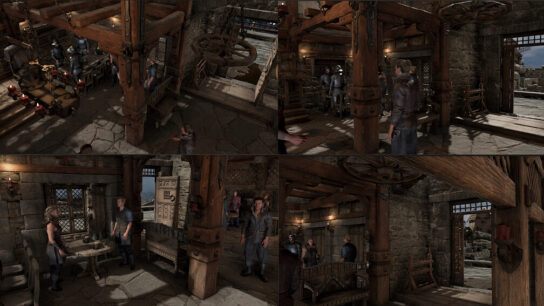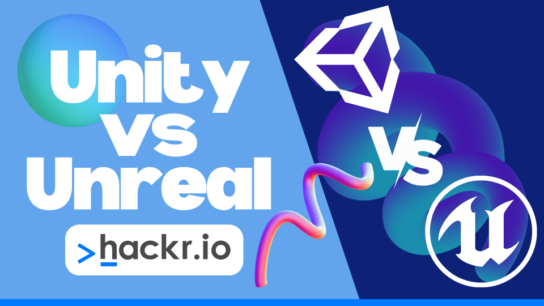We continue our discussion of comparing the two general game-making technologies—Unreal Engine and Unity. Today, we’d like to discuss the performance aspects of these engines.
When comparing Unity vs Unreal performance metrics such as frame rates, load times, and resource management, each Engine has its strengths and optimizations tailored to different platforms (PC, consoles, mobile).
Unreal Engine is renowned for its high-fidelity graphics capabilities, which, while powerful, can require higher-end hardware to maintain optimal frame rates, especially on PCs and consoles. It uses advanced rendering features like dynamic lighting and physically-based rendering, which can impact load times and performance on less capable devices. However, Unreal Engine’s game-making toolset includes comprehensive profiling and optimization tools that help manage resource allocation efficiently.
Unity, on the other hand, is praised for its versatility and lighter-weight architecture, making it generally more adaptable across a wide range of hardware, including mobile devices. Unity games tend to have faster load times and more consistent frame rates on less powerful machines due to the engine’s efficient use of resources and less demanding default graphical settings. Unity performance analysis can be adjusted significantly through its flexible asset pipeline and optimization settings, making it ideal for projects targeting a broad spectrum of devices.
Speaking of Unity vs Unreal performance comparison, both engines offer extensive support for performance tuning. Still, the choice between them might depend on the project’s and the target platform’s specific performance needs.
The graphical capabilities of Unreal Engine and Unity showcase distinct approaches to visual fidelity, heavily influenced by their rendering technologies.
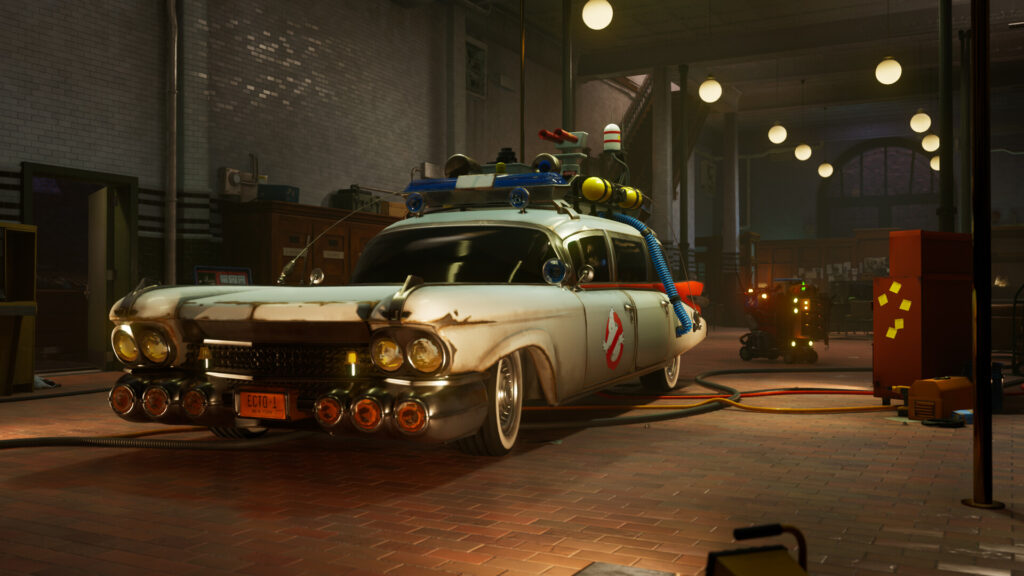
A screenshot from Ghostbusters: Spirits Unleashed, one of our latest UE projects
Unreal Engine excels in producing visually stunning graphics and is often the go-to for projects requiring high-end, cinematic quality. It leverages its powerful Unreal Engine 4 and the newer Unreal Engine 5, which include features like real-time global illumination with Lumen, highly detailed virtualized micro-polygon geometry with Nanite, and extensive ray tracing support. These technologies allow developers to create complex scenes with dynamic lighting and highly realistic materials and textures, pushing the boundaries of visual realism, especially on high-spec PCs and next-generation consoles.
While traditionally seen as slightly less potent in the high-end graphics arena than Unreal Engine, Unity has made significant strides with its High Definition Render Pipeline (HDRP). Unity’s HDRP is designed to provide high-fidelity graphics capable of detailed lighting, shadows, and ray-tracing effects. This makes Unity highly competitive, especially for developers looking to balance striking visuals with broader platform reach, including mobile devices requiring extensive graphical adjustments.
In conclusion, while Unreal Engine offers cutting-edge graphical capabilities suited for projects with fewer constraints on performance and hardware, Unity provides a versatile and scalable solution that can achieve considerable visual quality across various devices. Its latest updates include extensive support for ray tracing.
Scalability and optimization are crucial for managing large-scale projects and massive game worlds. Both Unreal Engine and Unity provide robust tools and frameworks to address these challenges, though their approaches and ease of use differ.
Unreal Engine is renowned for its ability to handle large-scale environments and complex simulations. It includes tools such as the World Partition system, which simplifies the management of vast game worlds by dividing them into manageable chunks that load dynamically based on the player’s location. Unreal also offers advanced level-of-detail (LOD) techniques and streaming capabilities, essential for maintaining performance in extensive worlds. The engine’s Blueprints visual scripting system and comprehensive profiling tools allow easy adjustments and optimizations, even for those without deep coding knowledge.
Unity approaches scalability with a slightly different toolkit, focusing on its Entity Component System (ECS), the C# Job System, and the Burst Compiler. These tools enable highly efficient data-oriented design, crucial for optimizing performance and resource usage in large projects. Unity’s LOD system and scene management tools also support scalability, allowing detailed control over rendering and asset loading. While Unity’s optimization tools are powerful, they sometimes require a deeper understanding of coding than Unreal’s more visual approach.
Both engines support extensive customization in optimization processes, catering to a wide range of project scales and complexity. However, Unreal Engine may be slightly more accessible for non-programmers due to its visual scripting options. At the same time, Unity offers more granular control through code, appealing to developers with a strong programming background.
Cross-platform functionality is a key strength of both Unreal Engine and Unity, enabling developers to reach a broad audience across actual gaming devices. Each engine, however, has its own set of challenges and considerations when porting games between platforms.
Unreal Engine offers robust support for various platforms, including PCs, consoles, mobile devices, and even VR and AR systems. Its ability to automatically adjust asset quality and performance settings based on the target device simplifies porting and maintaining high-quality visuals and gameplay. However, Unreal’s high-end graphical capabilities can sometimes pose challenges for less powerful platforms like mobile devices, requiring developers to make significant adjustments to ensure performance and compatibility. The engine’s Blueprint system aids in these adjustments by providing a visual scripting tool to manage platform-specific functionality without deep changes to the core code.
Unity is renowned for its excellent cross-platform support, with built-in tools that allow games to be deployed on over 20 different platforms, including mobile, desktop, consoles, and web. Unity’s strength lies in its flexible rendering pipeline and asset management systems, making optimizing games for various hardware specifications easier. However, developers face challenges in achieving consistent performance and visual fidelity across platforms, especially when transitioning from high-powered PCs or consoles to mobile devices. Unity’s scripting and asset bundles provide mechanisms to dynamically tweak game performance and appearance, accommodating the wide variety of hardware capabilities.
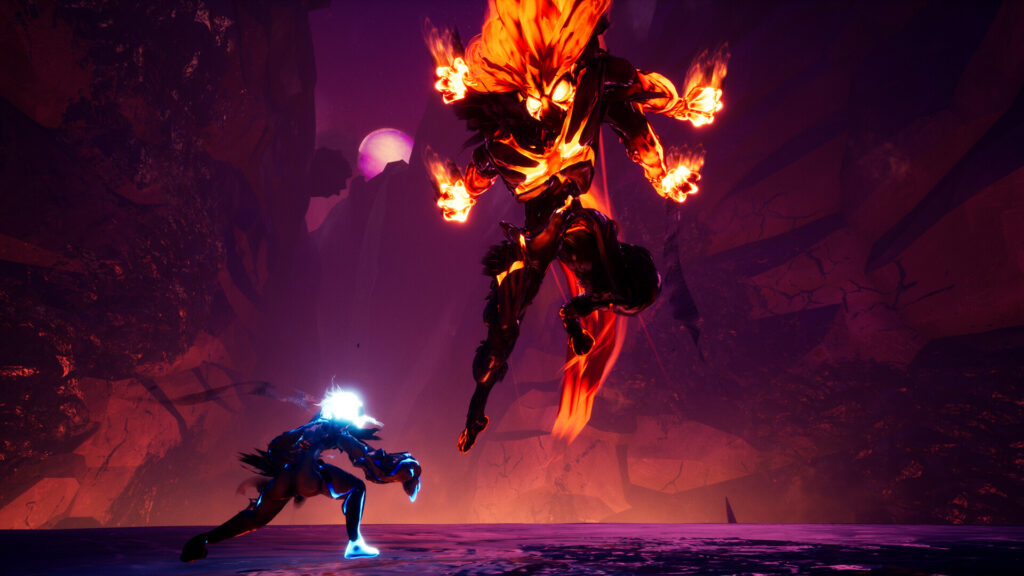
A screenshot from Strayed Lights – one of our latest cross-platform UE projects
Both engines demonstrate a solid ability to adapt quickly to industry changes, with Unreal Engine often leading in high-end graphics and Unity excelling in cross-platform versatility. Their frequent updates ensure that developers have access to the latest technologies and best practices, making both engines competitive choices for game development. The choice between them may depend on specific project needs, such as the focus on cutting-edge graphics, broad platform support, or Unity vs Unreal frame rate comparison.
Unreal Engine is known for its commitment to integrating the latest advancements in game technology. Epic Games frequently updates Unreal Engine, typically rolling out major updates several times a year. These updates not only fix bugs and improve stability but also introduce cutting-edge features that align with the latest graphics, VR, and real-time performance metrics trends. Unreal has been particularly quick to embrace new graphical technologies such as ray tracing and AI-driven tools, ensuring developers can access the most advanced tools for their projects.
Unity also offers regular updates, focusing on improving usability, expanding functionality, and integrating new technologies. Unity releases major updates multiple times annually, aiming to enhance the engine’s core capabilities and adaptability to new devices and platforms. Unity has been exceptionally proactive in adapting to market trends, such as the rise of mobile gaming, augmented reality (AR), and virtual reality (VR), providing developers with a broad range of tools tailored for these platforms.
Both engines demonstrate a solid ability to adapt quickly to industry changes, with Unreal Engine often leading in high-end graphics and Unity excelling in cross-platform versatility. Their frequent updates ensure that developers have access to the latest technologies and best practices, making both engines competitive choices for game development. The choice between them may depend on specific project needs, such as the focus on cutting-edge graphics or broad platform support.
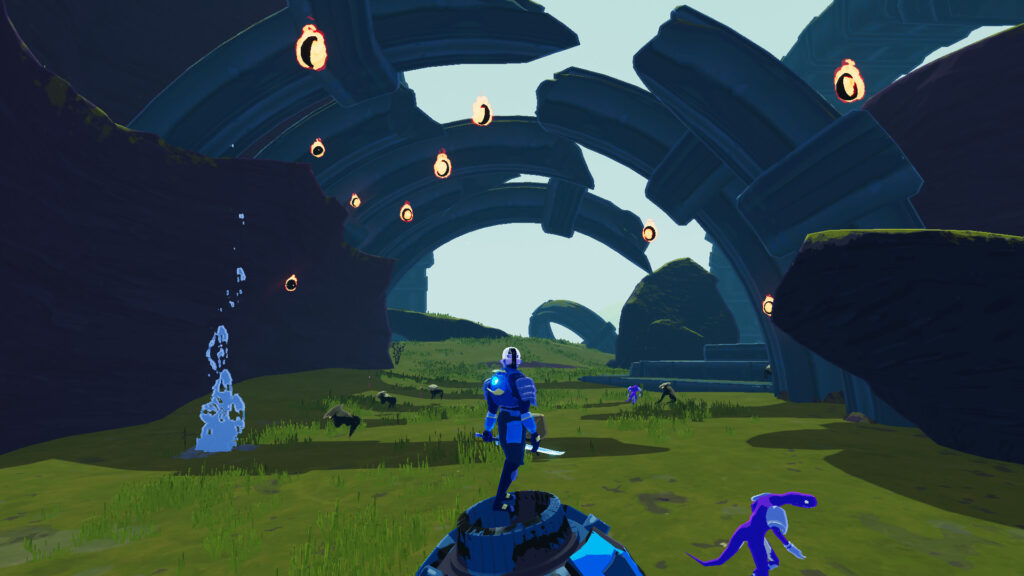
A screenshot from Risk of Rain 2 – one of our latest Unity multiplayer and cross-platform projects
In conclusion, both Unreal Engine benchmark results allow them to stand as powerful game development tools, each with unique strengths and challenges across various dimensions such as performance, graphics, scalability, and cross-platform functionality.
Unreal Engine excels with high-end graphics and large-scale project management, making it ideal for developers seeking cutting-edge visual quality and complex simulations. Conversely, Unity offers remarkable versatility and easier cross-platform deployment, crucial for projects targeting various devices and platforms.
Both technologies’ regular updates and game engine performance testing ensure they remain adaptable to new technologies and industry trends, providing developers with the tools necessary to create innovative and engaging gaming experiences. Ultimately, the choice between Unreal Engine and Unity will depend on the project’s specific needs, the target audience, and the platforms on which the game will be deployed.
In case you need consulting or have an Unreal Engine or Unity project in mind – contact us and let’s bring it to life!

